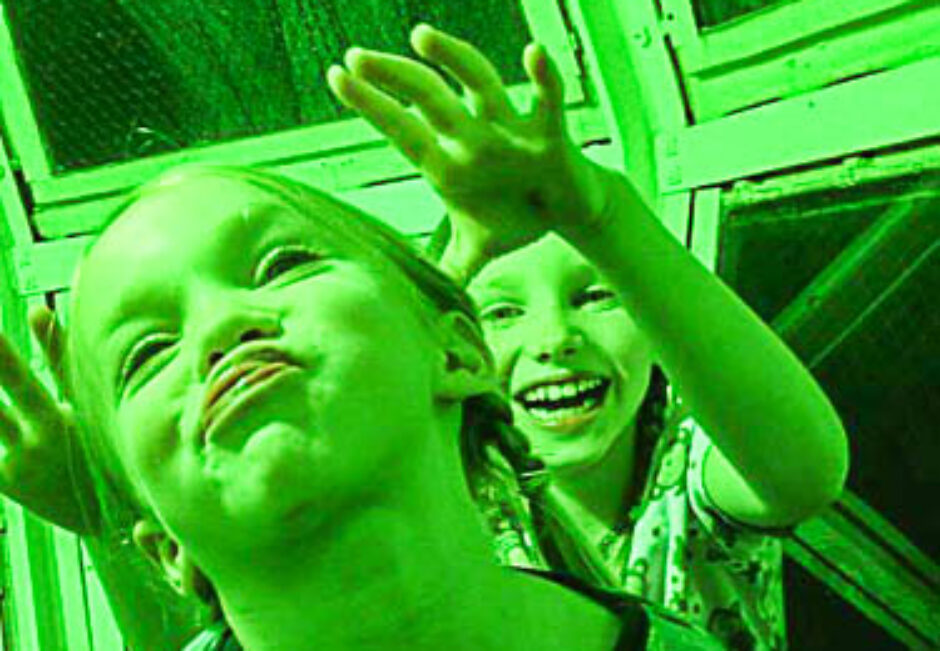Bill McKibben’s recent article in Grist, talks about the massive art coming out of the 350 initiative. The name, 350 Earth, points to the number of parts per million that most scientists agree is an acceptable upper level of carbon dioxide in the atmosphere. Today the level is about 390 parts per million.
When I saw these images, it reminded me that more than a decade ago, I was working on a NEA grant (along with corporate sponsorships) to underwrite a series of site specific art that could not be completely seen by one person, nor could they be completely experienced in the first person. It was not about the environment, in fact most of the works were about the self delusion that comes from our deepest beliefs be they faith, passion, politics or simply intuition, the fact remains that if one approaches these beliefs rationally they simply don’t hold water.
The art works I wanted to create could only be experienced second-hand. Many observers needed to share their piece to put these jigsaw like works together and in most cases the media would need to gather those stories (and hopefully images) to piece together the complete work of art. It was a heady piece for sure.
One of the art works was to be deep under the ocean and only a few submarines and a couple divers would ever see it in person, and they would only see a small part, but they could photograph those pieces and if those were to be assembled, one would experience the work of art. Another piece was a mystery story told on billboards spread across the United States on Route 50. A few truckers or cross country drivers might actually see all of the billboards, but for the most part, multiple travelers would need to work together to piece the facts and discover how things started or how things turned out. (Depending on whether they saw the beginning, middle or end.) Another work from that series was three massive drawings created in a desert that could be glimpsed from outer space. To see the complete drawing, one would need to layer the three images one on top of another. One aspect of the series that I was particularly liked was that for it to succeed, the media had to be willing to connect the dots.
…but I digress…these works from the 350 “Art for Climate” series are born out of ….
….the site-specific environmental works from the 1970′s. Works such as Robert Smithson’s Spiral Jetty, Walter De Maria’s Lightening Field, Michael Heizer’s City or Trisha Brown‘s laundry piece with dancers climbing in and out of a string of clothes hanging 20 feet off the ground in an alley during the Judson movement. Then came Christo and Jeanne-Claude‘s gigantic orange-wrapping series, James Turrell‘s Roden Crater and more recently Andy Goldsworthy‘s prolific “temporary” outdoor works that we only see because they were photographed.
The elephant from India other images in this post involve tens of thousands of people and can, in many instances, only be seen from outer space.

This enormous Solar Sun was created in Cape Town, South Africa, out of 70 high powered solar “cookers”. After the event, the parabolic stoves were donated to the Khayelitsha community where many people do not have access to electricity.

What a “cool roof.” Molly Dilworth used reflective paint to create an outline of the NY and NJ coastline after a 7 meter rise in the sea level. The building is a school in the new Times Square Plaza in NYC. The solar sun and cool roof actually deliver a climate solution. Each of the solar stoves will last for 10 yrs and require no fossil fuels. The reflective paint on the roof saves the mid-town school by reducing the need for air-conditioning.

The image above reminds me of Katrina. It is a picture of a person standing on their house to avoid a flood. The work was created in the Dominican Republic and this is a satellite image. One can only imagine the massive scale of this one!


